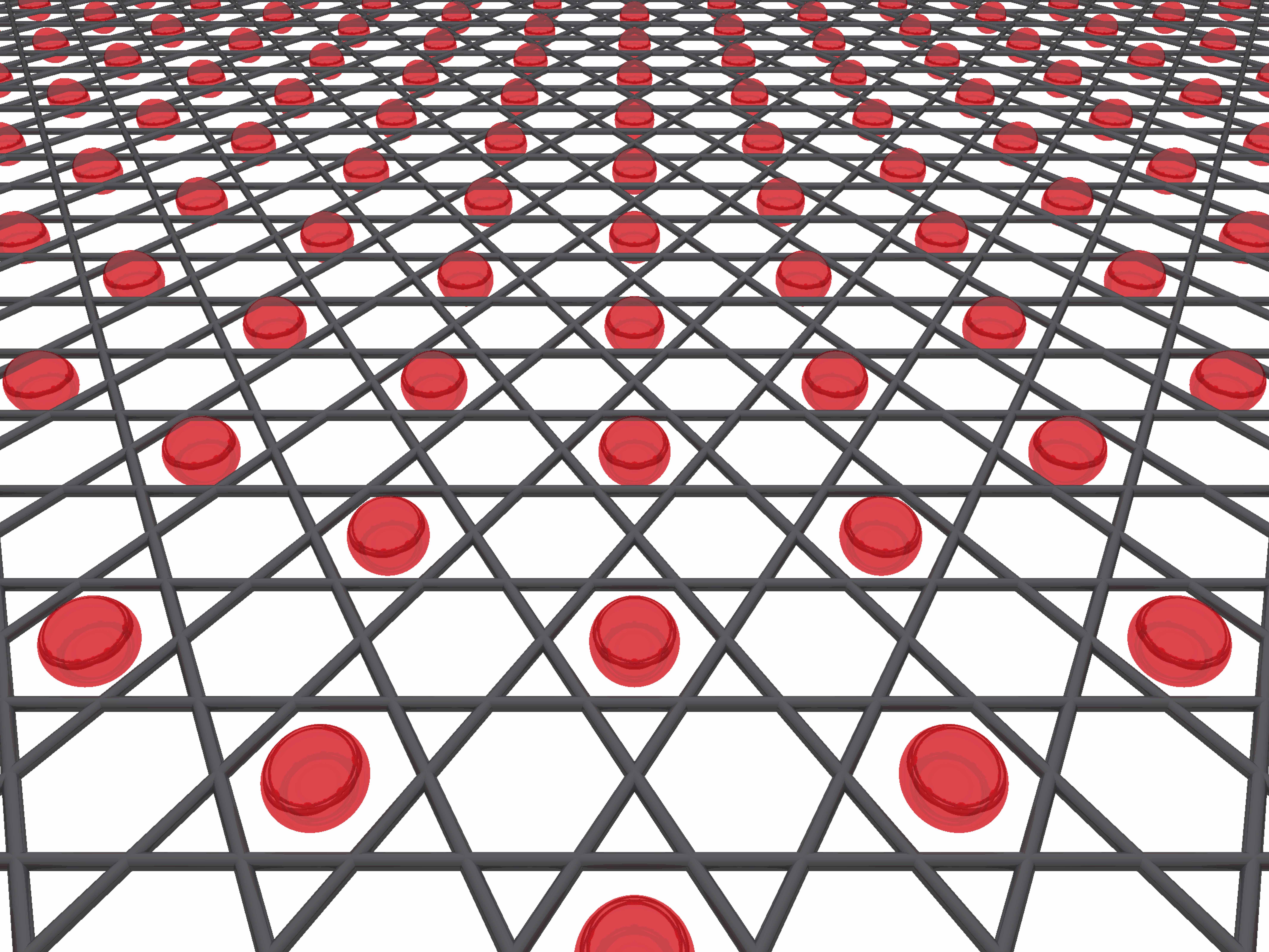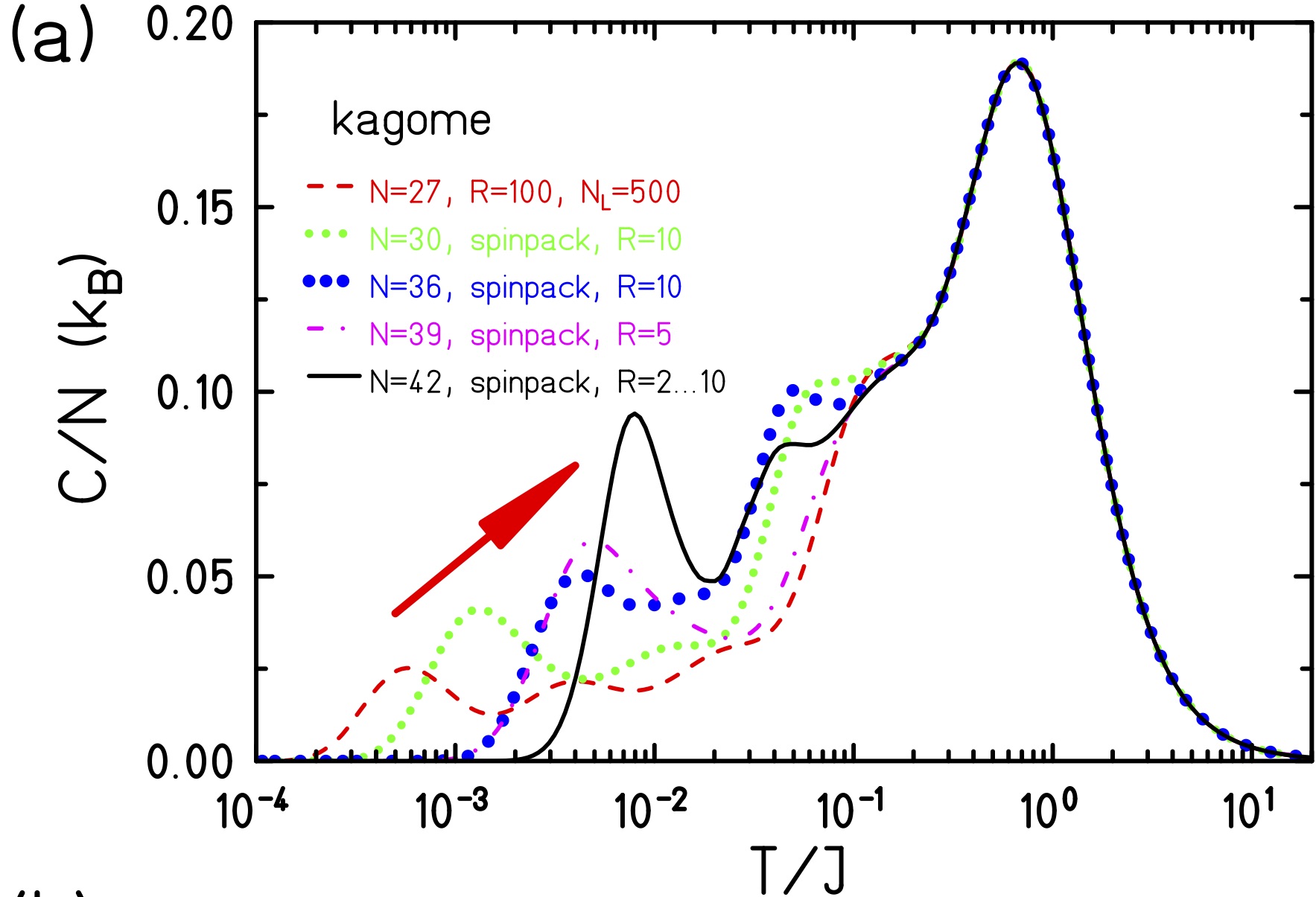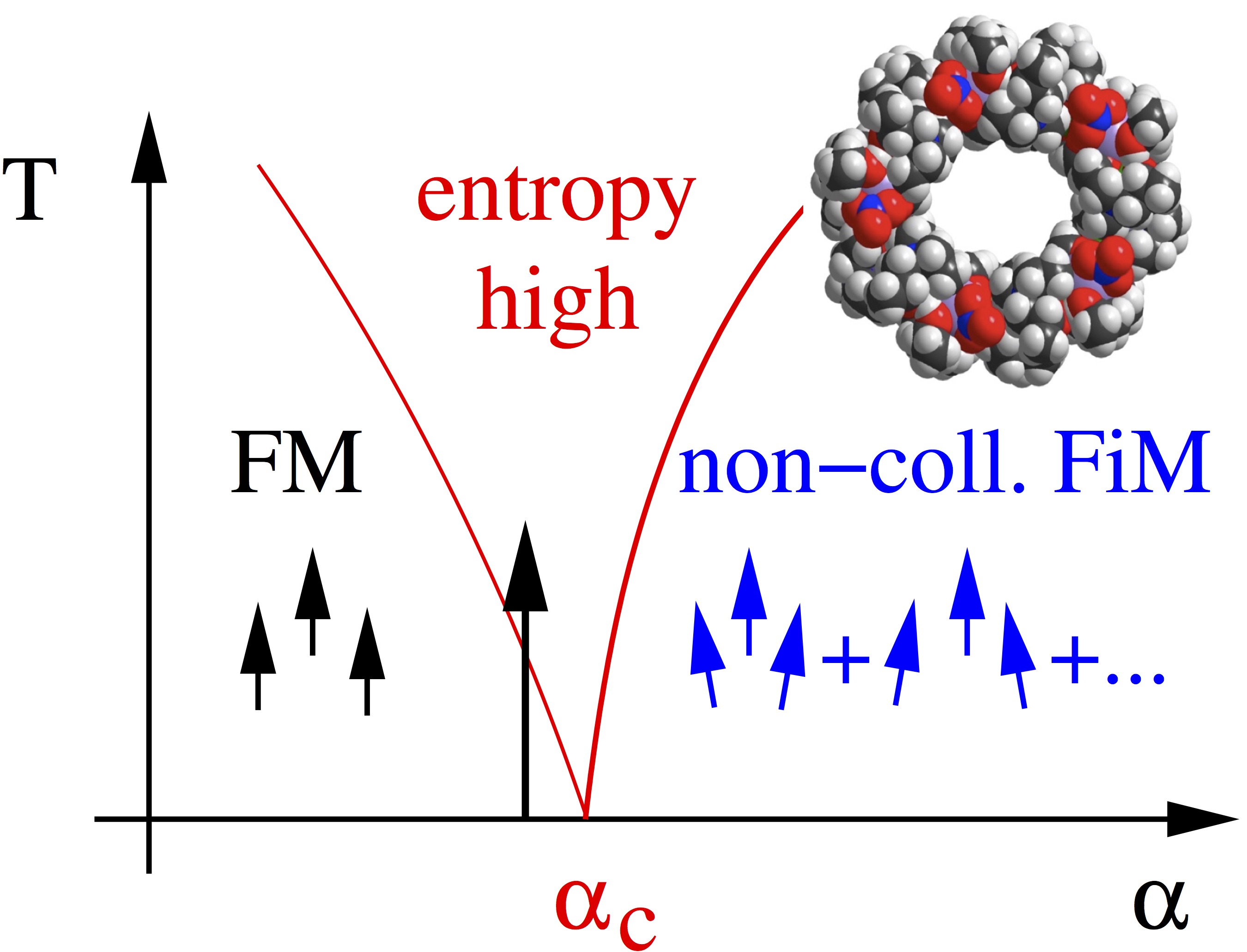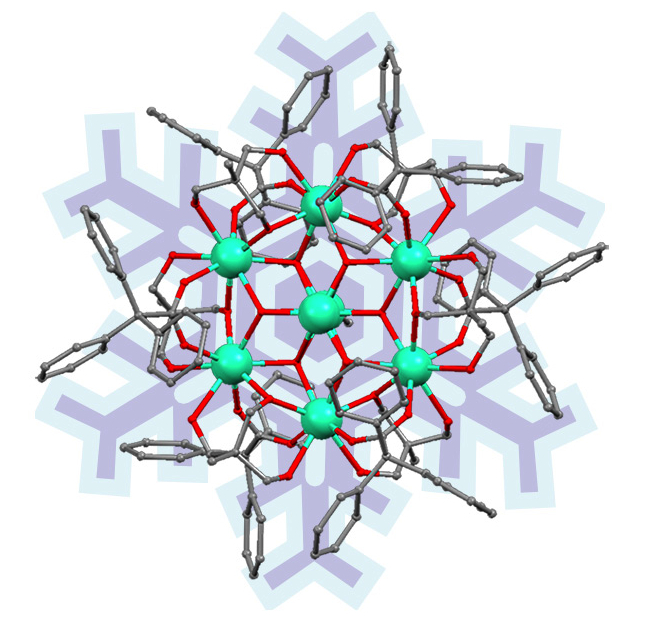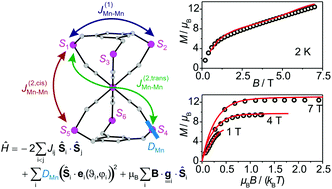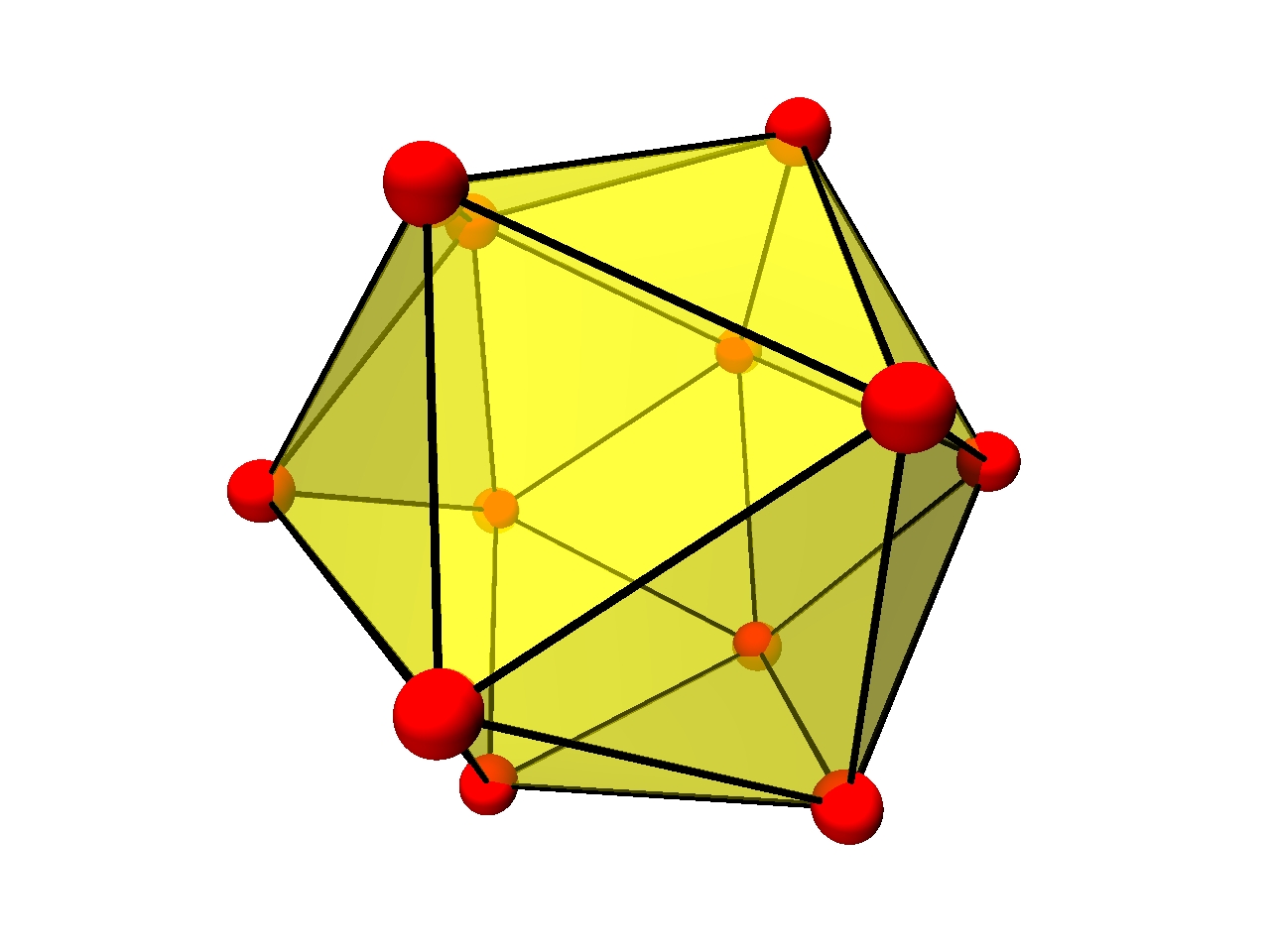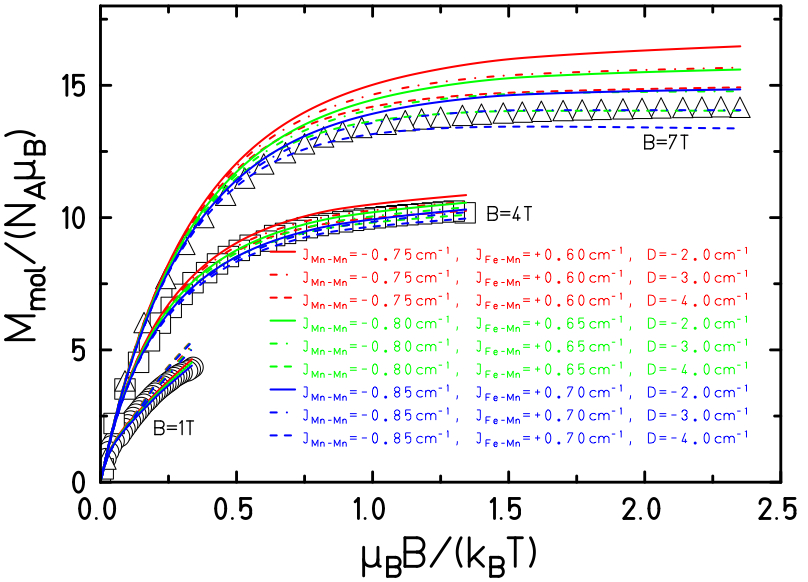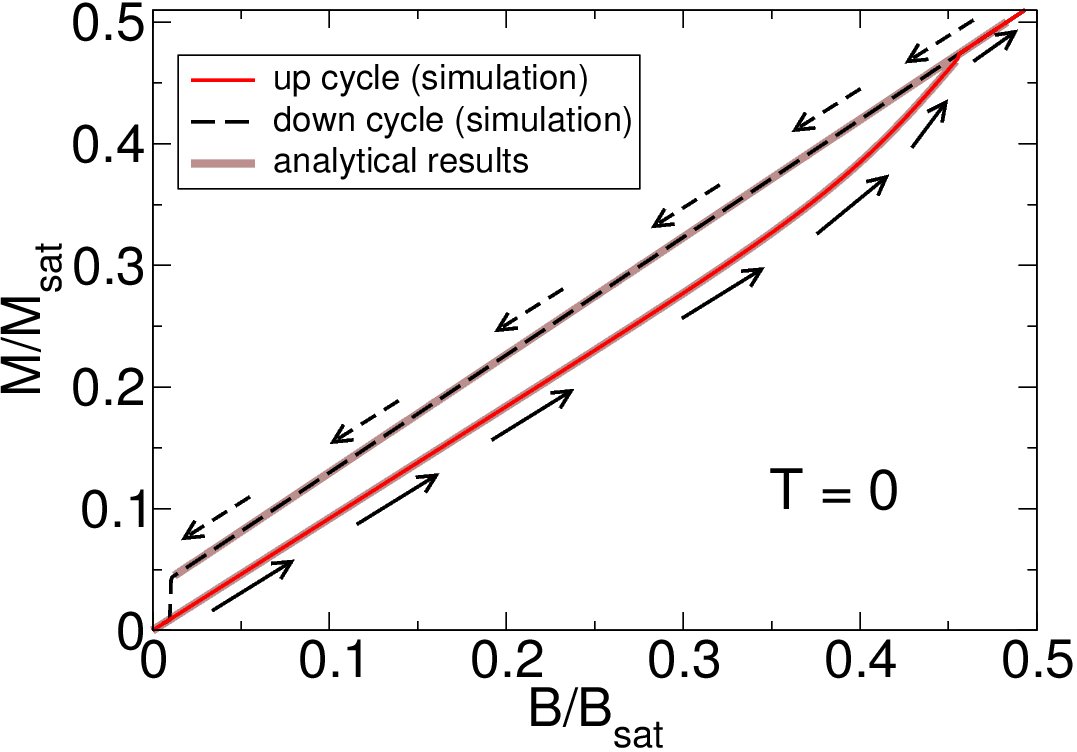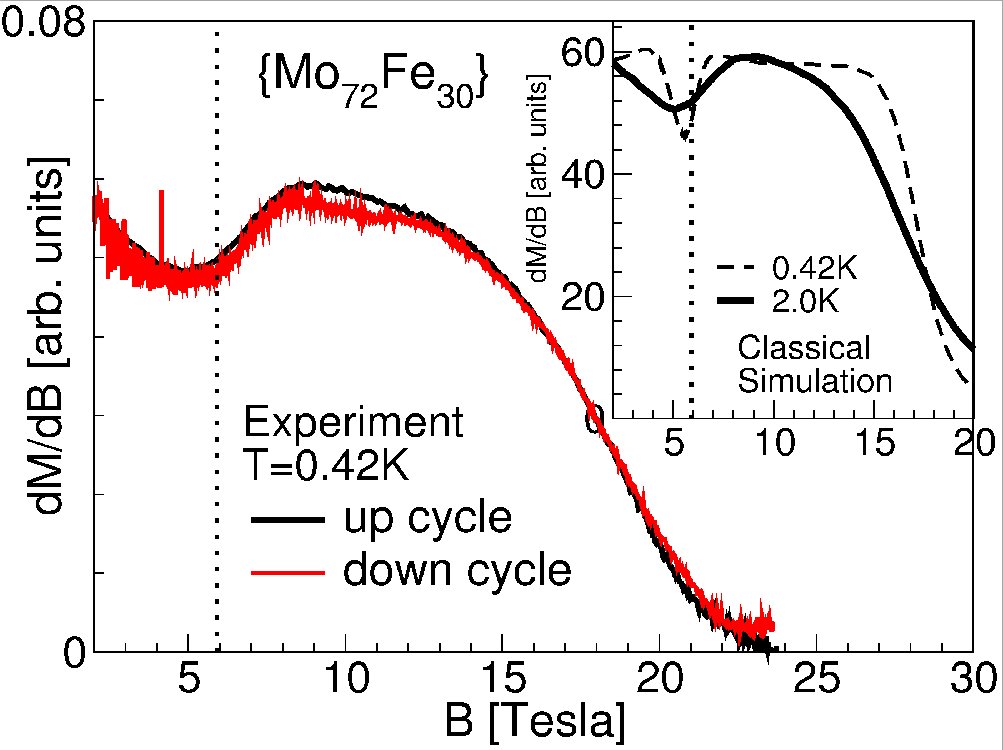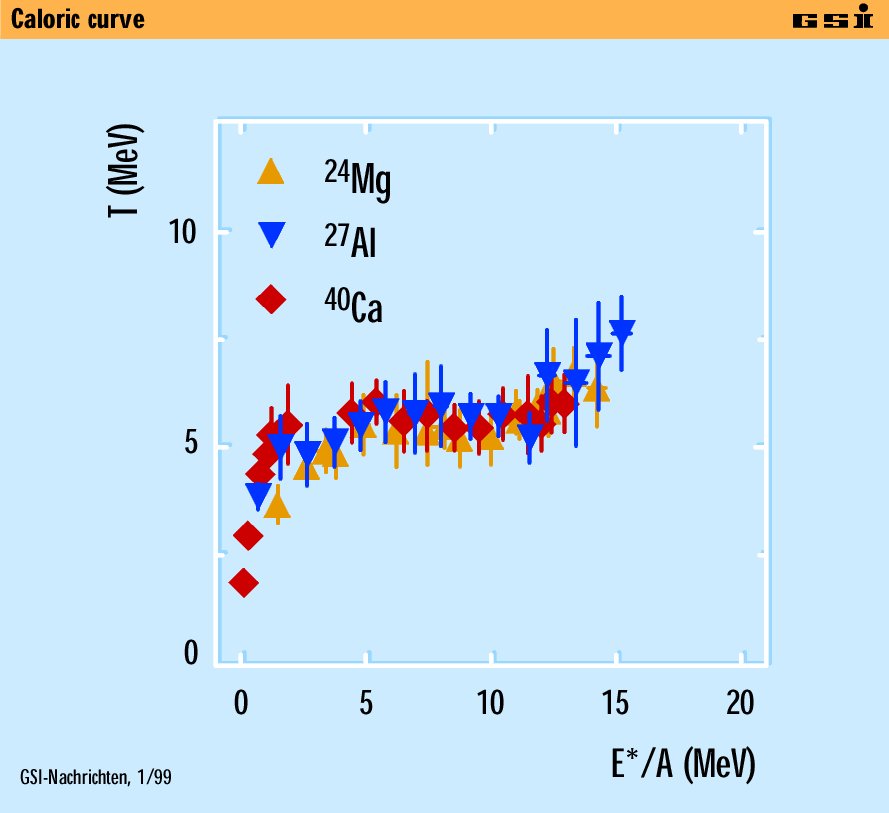| Prof. Dr. Jürgen Schnack | Universität Bielefeld Fakultät für Physik D-33501 Bielefeld |
| | |||||||||||||||||||||||||||||||||
RESEARCH HIGHLIGHTS
|
| Magnon crystallization in the kagome lattice antiferromagnet
| Magnetism of the N=42 kagome lattice antiferromagnet
| High spin cycles: topping the spin record for a single molecule verging on quantum criticality
| Quantum signatures of a molecular nanomagnet in direct magnetocaloric measurements
| Systematic investigations of the single-molecule magnet family [M1III6M2III]3+
| Effects of frustration on magnetic molecules
| Complete diagonalization studies of an anisotropic molecule
| Hysteresis without anisotropy
| Competing Spin Phases in Fe30
| Giant magnetization jumps
| Fermionic Molecular Dynamics
|
| | ||
SPIN SYSTEMS
|
The synthesis of molecular magnets has undergone rapid progress
in recent years. Each of the identical molecular units can contain as few as two
and up to several dozens of paramagnetic ions (spins).
Although these materials appear as macroscopic samples,
i.e. crystals or powders, the intermolecular magnetic
interactions are utterly negligible as compared to the
intramolecular interactions. Therefore, measurements of their
magnetic properties reflect mainly ensemble properties of single
molecules.
| We are interested in static and dynamical properties of magnetic molecules, our research focuses on:
Klaus Bärwinkel - Professor, Senior Fellow @ UOS | Euan Brechin - Professor, Senior Fellow @ The University of Edinburgh, UK Lee Cronin - Professor, Senior Fellow @ The University of Glasgow, UK Thorsten Glaser - Professor, Senior Fellow @ Bielefeld University Nedko Ivanov - Professor, Senior Fellow @ Bulgarian Academy of Sciences, Bulgaria Paul Kögerler - Professor, Senior Fellow @ RWTH Aachen Ulrich Kortz - Professor, Senior Fellow @ Jacobs University Bremen Marshall Luban - Professor, Senior Fellow @ Ames Lab, Iowa Eric McInnes - Professor, Senior Fellow @ The University of Manchester, UK Hiroyuki Nojiri - Professor @ Tohoku University, Japan Andrei Postnikov - Professor @ Metz University, France Johannes Richter - Professor @ Magdeburg University Heinz-Jürgen Schmidt - Professor, Senior Fellow @ UOS Christian Schröder - Professor, Senior Fellow @ FH Bielefeld Richard Winpenny - Professor, Senior Fellow @ The University of Manchester, UK ... |
| | ||
CARBON NANO MEMBRANES
|
Free-standing carbon nanomembranes (CNM) with molecular
thickness and macroscopic size are fascinating objects both for
fundamental reasons and for applications in
nanotechnology. Although being made from simple and identical
precursors their internal structure is not fully known and
hard to simulate due to the large system size that is necessary
to draw definite conclusions.
We perform large-scale classical molecular dynamics
investigations of e.g. biphenyl-based carbon nanomembranes. We
show that one-dimensional graphene-like stripes constitute a
highly symmetric quasi one-dimensional energetically
favorable ground state. This
state does not cross-link. Instead cross-linked structures are
formed from highly excited precursors with a sufficient amount
of broken phenyls.
|
Armin Gölzhäuser - Professor, Senior Fellow @ Bielefeld University | |
| | ||
THERMOSTATED DYNAMICS (1997 - 2007)
|
Statistical properties of finite interacting systems are of
great interest. The aim is to describe the behaviour of systems
like atomic clusters, atomic vapours or atomic nuclei at finite
temperatures and to investigate properties like the specific
heat or phase transitions.
For realistic systems like atomic clusters or nuclei where the
Hamilton function or operator contains a (two-body)
interaction it is hard or impossible to evaluate the partition
function especially for the quantum description.
| Equations of motion for the investigated system are often much easier; either they are exactly known and can be integrated at least numerically as it is the case with the classical Hamilton's equation or they can be approximated with standard methods like Time-dependent Hartree-Fock (TDHF) or quantum molecular dynamics methods as it is the case on the quantum side. The idea then is to extract the desired thermodynamic quantities from the time evolution of the system. If the system is ergodic, ensemble averages can be replaced by time averages. Our current research focuses on:
Detlef Mentrup - Philips Research, Hamburg | Hans Feldmeier - Professor, Senior Fellow @ GSI/TUD |
| | ||
IDEAL QUANTUM GASES (1997 - 2007)
|
Ideal quantum gases are usually treated in the thermodynamic
limit, i.e. occupying an infinite volume but maintained at a
given density, since all applications which were important in
the past, like the electron gas, phonons or photons, deal with
huge particle numbers. Only the experimental attempts of the
last years to investigate finite Fermi and Bose systems and to
describe them in terms of thermodynamics called for new
theoretical effort.
Interesting finite Fermi systems are for instance nuclei, which
behave like a liquid drop and therefore can undergo a first
order liquid-gas-like phase transition.
On the low excitation site of the caloric curve the nuclear
systems can be very often well described as an ideal Fermi gas
in a common harmonic oscillator potential (shell model).
Small Bose systems became available through the development of
traps. Here the focus is on the Bose-Einstein condensation which
for instance could be found investigating dilute atomic vapours
(alkali atoms) in magnetic traps. Again the system
can be well described as an ideal quantum gas contained in an
external harmonic oscillator potential.
| With the help of recursion formulae analytical and approximative results are obtained for small non-interacting Fermi and Bose systems. A closer inspection of the canonical partition function uncovers a surprising symmetry property which connects fermions and bosons contained in harmonic oscillator potentials of odd space dimensions. Simply speaking, it turns out that the properties of N fermions at temperature T are related to the properties of N bosons at the respective negative temperature -T.
Heinz-Jürgen Schmidt - Professor, Senior Fellow @ UOS | |
| | ||
TRANSPORT THEORY (1997-2008)
|
A quasi-particle theory for monatomic gases in equilibrium is
formulated and evaluated to yield the exact virial contributions
to the thermodynamic state functions in lowest order of the
density. Van der Waals blocking has necessarily to be accounted
for in occupation number statistics. The quasi-particle
distribution function differs from the Wigner function by a
bilinear functional thereof. The progress made so far is
promising with respect to a corresponding version of kinetic
theory.
|
Klaus Bärwinkel - Professor, Senior Fellow @ UOS | |
| | |||
FMD (1990-1997)
|
A new type of molecular dynamics is proposed to solve approximately the many-body
problem of interacting identical fermions with spin 1/2 using variational principles. The
interacting system is represented by an antisymmetrized many-body wave function
consisting of single-particle states which are localized in phase space. The equations of
motion for the parameters characterizing the many-body state (e.g. position, momentum,
width and spin of the particles) are derived from a quantum variational principle. The model
is designed to describe ground state properties of nuclii as well as heavy ion reactions.
Therfore the ansatz is extended towards correlated many-body states, in order to include
short-range correlations. Due to its non-linear equations of motion the model shows large
fluctuations in the final stage as it is seen in fragmentation reactions. Not only heavy-ion
reactions may be addressed, but also properties of excited nuclii like the
nuclear liquid-gas phase transition.
|
detailed description (PDF with hyperlinks)
|
Hans Feldmeier - Professor, Senior Fellow @ GSI/TUD | Thomas Neff - PostDoc @ GSI/TUD Robert Roth - Prof. @ TUD |
| | ||
UCOM (1993-1997)
|
The short range repulsion between nucleons is treated by a unitary
correlation operator which shifts the nucleons away from each
other whenever their uncorrelated positions are within the
replusive core. By formulating the correlation as a transformation
of the relative distance between particle pairs, general analytic
expressions for the correlated wave functions and correlated
operators are given. The decomposition of correlated operators
into irreducible n-body operators is discussed. The one- and
two-body-irreducible parts are worked out explicitly and the
contribution of three-body correlations is estimated to check
convergence. Ground state energies of nuclei up to mass number
A=48 are calculated with a spin-isospin-dependent potential and
single Slater determinants as uncorrelated states. They show that
the deduced energy- and mass-number-independent correlated
two-body Hamiltonian reproduces all "exact" many-body calculations
surprisingly well.
|
Hans Feldmeier - Professor, Senior Fellow @ GSI/TUD | Thomas Neff - PostDoc @ GSI/TUD Robert Roth - Prof. @ TUD |
| | |
| The URL of this site is http://obelix.physik.uni-bielefeld.de/~schnack/. | © J.Schnack, 24.08.2022 |
